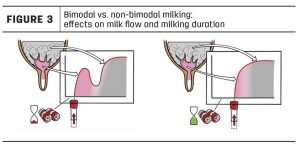
The USDA released their ten-year baseline projections showing growth in all categories.
There is a significant dynamic taking place in the market with cheese prices at the lowest level they have been since April. The butter price has been in a sideways pattern since early October after the price fell from the high in late August. However, the nonfat dry milk and dry whey prices have moved in the opposite direction.
The Grade A nonfat dry milk price moved to the highest level since November 22, 2022, while the dry whey price reached the highest level since April 22, 2022. The strength of the powder prices has done much to limit the decline of Class III and Class IV prices due to the weakness of butter and cheese prices.
Milk production has not rebounded so far this fall as anticipated, but demand has also not rebounded as much as anticipated leaving the butter and cheese markets struggling. As prices declined, buyers were purchasing for contracted orders and expected demand. This has put them in a position of having sufficient supply on hand with buying taking place on an as-needed basis.
Milk production has not been impacted as much as had been anticipated earlier this year. Other than seasonal buying this summer, there had been concern over the tight heifer supply and how that would limit milk production growth. Older cows that were retained in the herds were not expected to have the potential to improve output. This would tighten the milk supply.
However, the culling rate slowed but milk production per cow continued to improve resulting in production being higher than a year ago with August milk production 0.4% above a year ago and September milk production up 0.1% over September 2023 with 38,000 less cows. The spread of bird flu was anticipated to have a greater impact on milk production, and it did for those farms that were impacted by it. Overall, it has not had much impact so far. Once the market participants realized that supplies were sufficient for demand through the end of the year, prices came under pressure, falling rapidly.
What is the outlook for cow numbers, milk production and prices in the future? The USDA released their ten-year baseline projections showing growth in all categories. Cow numbers are projected to steadily increase with numbers estimated to reach 9.502 million head in 2034. Milk production is projected to increase from 225.8 billion pounds this year to reach 253.1 billion pounds in 2034. This would be an average growth of 2.73 billion pounds per year. This would be achieved by the increase of milk production per cow from 24,195 this year to 26,630 per cow by 2034.
The All-milk price is projected to average $25.58 per cwt in 2034. This would mean a record milk price average with record milk production. Individual dairy product prices were also projected with cheddar cheese showing the greatest price potential increasing from an average of $1.88 this year to $2.14 per pound in 2034. Dry whey was the other category that showed more potential.
Over the ten-year period, the average price is projected to increase 6 cents to reach 54 cents per pound. Nonfat dry milk is projected to gain of 4 cents by 2034 averaging $1.27 per pound. The USDA did not have much hope for the butter price, they lowered the average price by 5 cents to average $2.87 per pound in 2034.
These price projections may not be as much as we would hope for the next ten years, but bear in mind that these are price projection and there are many things that can influence the market during this period and from year to year. Volatility has been increasing and this will not change as the markets are impacted not only by domestic supply and demand, but by the world markets and political events.
The farm must be prepared to take advantage of this volatility as it unfolds and offers profitable prices to protect and build equity and move the farm forward.
Robin Schmahl is a commodity broker with AgDairy, the dairy division of John Stewart & Associates Inc. (JSA). JSA is a full-service commodity brokerage firm based out of St. Joseph, MO. Robin’s office is located in Elkhart Lake, Wisconsin. Robin may be reached at 877-256-3253 or through the website www.agdairy.com.
The thoughts expressed and the basic data from which they are drawn are believed to be reliable but cannot be guaranteed. Any opinions expressed herein are subject to change without notice. Hypothetical or simulated performance results have certain inherent limitations. Simulated results do not represent actual trading. Simulated trading programs are subject to the benefit of hindsight.
No representation is being made that any account will or is likely to achieve profits or losses similar to those shown. There is risk of loss in trading commodity futures and options on futures. It may not be suitable for everyone. This material has been prepared by an employee or agent of JSA and is in the nature of a solicitation. By accepting this communication, you acknowledge and agree that you are not, and will not rely solely on this communication for making trading decisions.
You can now read the most important #news on #eDairyNews #Whatsapp channels!!!
🇺🇸 eDairy News INGLÊS: https://whatsapp.com/channel/0029VaKsjzGDTkJyIN6hcP1K























